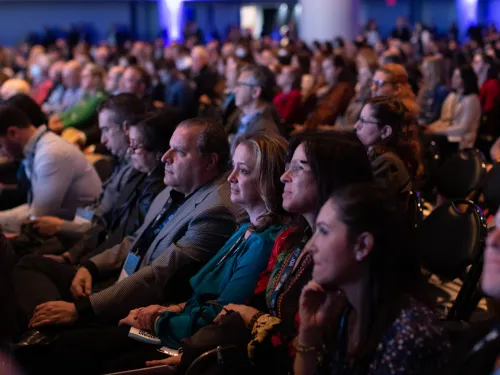Early Childhood Question Corner
For Educators | For Parents, Families, and CaregiversThe foundation for gender identity formation gets established during the preschool years (Derman-Sparks and Edwards, 2010, 91). By age three, although most children can identify their gender, they are still sorting out the concept of gender (Roberts and Hill, 2003). “The support they get or do not get in their preschool years lays the foundation for the rest of their gender identity formation,” according to Louise Derman-Sparks and Julie Olsen Edwards (2010, 91).
Adults can take a variety of measures to create fair and gender-equitable environments for young children. They can:
Reflect on their own attitudes and behaviors.
- Send only nonsexist, non-stereotyped messages (Miller, 2001).
- Provide equal opportunity for all children to speak (Derman-Sparks, Edwards, 2010, 98).
- Avoid responding more quickly to children of one gender than another (Miller, 2002).
- Discuss gender issues by involving children in helping to solve gender-related problems that may arise (Miller, 2002).
- Use gender-neutral language (Choose plural pronouns, such as “they” and “them” and words such as firefighter, flight attendant, garbage collector, and humankind can easily be used to replace the use of “man” as a generic noun or ending.)
- Change traditional children's music, rhymes, and finger plays so that they include characters of all genders. For example, different gender names: In Mary had a Little Lamb, use “Jimmy” instead of “Mary.” Interchange parental roles: In Five Little Monkeys, interchange “Mama” and “Papa.” Make verses gender neutral: In The Wheels on the Bus, use “parents” instead of “mommies;” in Where Is Thumbkin? use “Friend” instead of “Sir;” in Old MacDonald Had a Farm, use “The MacDonalds” instead of “Old MacDonald” and “they” instead of “he.”
- (Bias-Free Foundations: Early Childhood Guidebook & Activities for Educators, 2001, 8)
Ensure the environment reflects diversity in gender roles and encourages opportunities for everyone by including:
- Alternatives to the pretend kitchen such as a workbench, home office, store, office, hospital, etc.
- Gender neutral career puzzles that include images of people of all genders in non-stereotypical roles such as all people depicted as physical and strong, in leadership roles and having occupations in fields such as sports, science, mechanics, etc. and all people showing emotions other than anger, participating in domestic tasks, providing care for families, and having occupations in fields such as dance, nursing, cooking, etc.
- Diverse family styles and compositions.
Children's books that reflect diverse gender roles.
(Bias-Free Foundations: Early Childhood Guidebook & Activities for Educators, 2001, 7, 11)
Help children gain comfort with a broader range of activities, regardless of their gender.
- Observe the ways children's choices seem influenced by gender lines varying groupings during free play/choice time.
- Establish non-sexist routines and experiences by ensuring that all children have equal responsibility in assigned jobs (Derman-Sparks, Edwards, 2010, 97).
Help children develop skills for thinking critically and taking action.
- Have them explore their ideas about gender identity and think about what is or is not “fair" with respect to gender and gender stereotypes..
- Teach them ways to address hurtful gender put-downs.
- Honor children when they stand up for themselves or others in the face of gender bias. (Derman-Sparks, Edwards, 2010, 99)
Although gender role norms have broadened over time, attentiveness to the equity and diversity in gender identity can help create a solid and positive foundation for children's future identity development.









